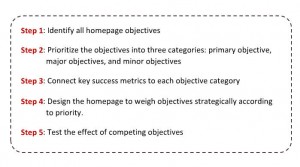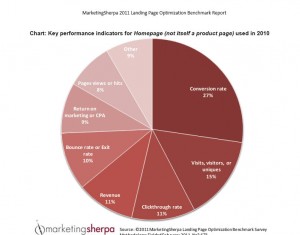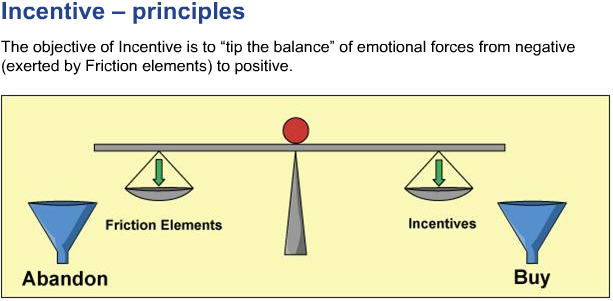Marketing Optimization: 4 steps to discovering your value proposition and boosting conversions
Confession time…one of my favorite movies is the Will Ferrell classic, Elf. I love the scene where Buddy (the elf) sees a sign outside of a coffee shop announcing that it has “The World’s Best Cup of Coffee.”
Yet many companies still have trouble avoiding such preposterous value propositions in their marketing.
According to a recent incentivized survey done by MarketingExperiments (MarketingSherpa’s sister company), 120 out of the 275 (30%) total business plans we reviewed had no real value proposition. Another 60% were categorized as having only limited or substantial value. Only 10% were considered to have a strong, unique value proposition.
In all, on our scale of zero to five, 90% of those surveyed were at or under a two.
It’s an unnerving statistic given that a well-stated value proposition has (according to our research) been proven to get better response rates on everything from business plans to landing pages.
So how do we craft a value prop that isn’t going to induce a side-splitting laugh in your audience?
Well, I have yet another confession to make…
I’m probably not the right person to ask. I honestly don’t have a lot of background with value proposition. But I DID recently attend a workshop on Landing Page Optimization with the Managing Director (CEO) of MECLABS, Dr. Flint McGlaughlin.
In it, he devoted a whole section to getting your value proposition straight. So I’m going to share what I learned there and share a little of my own commentary as well.
A true value prop isn’t dictated in a board room
According to Flint, the basic key to determining a strong value proposition for your company is understanding that a value prop is not usually determined, it is discovered.
It’s a simple shift in thinking that makes a huge difference. Sitting at your desk and trying to manufacture a shiny new value proposition that you think will sound good is usually pretty fruitless.
Prepare yourself for some hard thinking and investigation into the bowels of your company, as we explore four steps to discovering your value proposition…
1. Answer the question: If I am your ideal customer, why buy from you rather than your competitors?
Assuming it was true, “The World’s Best Cup of Coffee” could be an excellent value proposition. The ideal customer in this case is your typical Manhattan coffee drinker and the reason they should buy coffee there is obvious – it’s the best in the world.
The problem is, it’s not true. The modern consumer simply does not believe your overindulgent hype. So the ideal customer is put off and ends up without a reason to buy coffee there instead of the better-looking shop across the street.
Admittedly, this is an extreme example. Yet marketers make this mistake every day. You likely come across this marketing jargon-filled hype every day. Does a two-person B2B tech start-up really offer a scalable solution for Fortune 500 companies, for example? Just because you say it in your marketing material doesn’t make it true. And your savvy audience is well aware of this fact.
When you’re answering this question for your own value prop, it’s important to note here that you are putting yourself into your customer’s mind by answering as if you were them. So spit out the Kool-Aid and be a little skeptical.
2. Compare your answer with the claims of your main competitors.
Of course we all know that just about anywhere you go, there’s a coffee shop claiming to have the world’s best cup of coffee. Again, that’s part of the comedy of this scene.
If any of your competitors can say the same thing about their products or business as you without completely lying, you don’t have a strong value proposition.
While your mother probably told you how special you were, a unique snowflake unlike all the other kindergarteners in the world, the same can’t automatically be said about your product offering and company. Is it really unique? Or do people only buy from you on a lark or because they haven’t stumbled across your competitors yet?
3. Refine your value proposition until you can articulate it in a single, instantly credible sentence.
The problem with the coffee shop’s value proposition was that it wasn’t instantly credible. No one believes their coffee is the best coffee in the world because there’s no way to prove that.
Your value proposition must be instantly believable. A great way to do this is to add numbers to your value proposition. If that coffee shop had said something along the lines of, “9 out of 10 people preferred our coffee to Starbucks”…you’d be more likely to believe it.
Another strategy is to be as specific as possible. Let’s say you’re not quite there yet with the imaginary value proposition above. What if it said, “9 out of 10 people preferred our coffee to Starbucks in a double-blind taste test?”
The double-blind taste test adds a dimension of specificity that increases the credibility of the sentence.
4. In the end, you must test your value proposition.
No matter what you do to come up with a value proposition, there’s no way to guess what resonates the best with your audience. You need to test it.
Your value prop should be visible in every step of your sales process. Wherever you display it, test different phrasing, angles, and ideas to get deeper inside the mind of your customers.
The better you know what they find valuable, the better you can serve them.
The next stop of the MarketingExperiments Landing Page Optimization Workshop tour is on June 1 in Atlanta. It will also be taught by Dr. Flint McGlaughlin. Then our MECLABS team will take the workshop on the road to New York, San Francisco…and more cities to be announced.
Related Resources
B2B Marketing: On Occam’s razor and value propositions
Optimizing Landing Pages: 3 Keys to Increasing Conversion Rates











